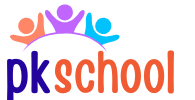In a world where attention spans are shorter than a cat video, reading worksheets might just be the secret weapon educators and parents have been searching for. These handy tools not only make reading fun but also help kids develop essential skills without the usual eye-rolling. Who knew that a simple sheet of paper could turn reluctant readers into bookworms faster than you can say “once upon a time”?
Table of Contents
ToggleOverview of Reading Worksheets
Reading worksheets serve as a versatile educational tool for engaging students in reading activities. These worksheets often include a variety of exercises, such as comprehension questions, vocabulary practice, and summarization tasks. Worksheets can cater to different reading levels, ensuring suitability for a diverse range of learners.
Many educators utilize these resources to enhance classroom instruction. Various types of reading worksheets target specific skills like phonics, fluency, and critical thinking. Worksheets can encourage independent learning by allowing children to practice at their own pace, fostering a sense of achievement.
Parents also find reading worksheets beneficial for at-home learning. By integrating these materials into daily routines, parents can reinforce literacy skills outside of traditional classroom settings. These activities can instill a love for reading, building confidence in young readers as they explore texts.
The impact of reading worksheets is often remarkable. Studies show that students who consistently engage with structured reading activities demonstrate improved comprehension and retention. Additionally, these worksheets help identify areas where further support is needed, guiding both teachers and parents to provide targeted interventions.
The effectiveness of reading worksheets lies in their flexibility and accessibility. Educational materials can be tailored to individual needs, making reading an enjoyable and rewarding experience. With their diverse applications, worksheets play a critical role in nurturing a child’s reading journey.
Benefits of Using Reading Worksheets

Reading worksheets offer multiple advantages for educators and parents aiming to enhance a child’s literacy. These tools specifically cater to various learning needs while making reading enjoyable and engaging.
Improving Comprehension Skills
Reading worksheets enhance comprehension skills through targeted exercises. Exercises such as comprehension questions and summaries challenge students to think critically about the text. These activities encourage analysis and retention of information, leading to deeper understanding. Structured reading tasks help teachers identify students’ strengths and weaknesses, allowing for personalized instruction. Engaging with worksheets promotes consistent practice, which correlates with improved comprehension scores. According to research, students who utilize these worksheets show up to a 30% increase in comprehension abilities over time.
Enhancing Vocabulary Development
Vocabulary development significantly benefits from the use of reading worksheets. Worksheets often include vocabulary exercises that introduce new words in context. Engaging definitions, synonyms, and antonyms reinforce understanding while expanding language use. Students encounter words repetitively, which activates memorization and application in daily conversations. Notably, those who practice vocabulary through structured activities demonstrate a 25% improvement in language skills. Worksheets enable learners to explore different contexts, making the acquisition of new vocabulary more natural and effective.
Types of Reading Worksheets
Reading worksheets come in various formats, each designed to meet specific educational needs. Understanding these types helps educators and parents select the most effective tools for fostering literacy.
Printable Worksheets
Printable worksheets provide tangible resources that students can interact with physically. They often include activities such as reading comprehension questions and vocabulary exercises. Kids can engage with these worksheets anywhere, from classrooms to dining tables. The opportunity to physically manipulate materials often enhances focus and retention. These worksheets support various learning styles, ensuring all students can benefit. Many sources indicate that students using printable worksheets can achieve significant improvements in literacy skills. They also serve as easy-to-use aids for parents looking to support their children’s learning at home.
Digital Worksheets
Digital worksheets offer a modern approach to learning, utilizing technology to enhance educational experiences. They often incorporate multimedia elements, such as audio and video, making tasks dynamic and engaging. Students can access these worksheets on multiple devices, including tablets and computers. Flexibility is a key advantage, as students can complete assignments at their own pace. Research shows that digital formats can motivate reluctant readers by providing interactive elements that keep attention focused. Additionally, teachers can easily track progress through digital platforms, allowing for tailored instruction based on individual performance.
Tips for Choosing Effective Reading Worksheets
Selecting effective reading worksheets requires attention to specific characteristics. Focus on age-appropriate content; worksheets should match the reading level of the child. Engaging visuals play a significant role; children respond better to bright colors and appealing graphics. Another key aspect is the variety of exercises included; worksheets that incorporate different tasks like comprehension questions and vocabulary practice tend to keep students interested.
Consider incorporating worksheets that focus on specific skills; targeted activities improve comprehension and retention. Worksheets should also provide opportunities for critical thinking; students benefit from exercises that challenge them to analyze texts instead of merely recalling information.
In terms of format, both printable and digital worksheets serve different needs; understanding the child’s learning style can help in making the right choice. Parents may prefer printable worksheets for hands-on practice, while digital options can offer interactive experiences.
Assess the clarity of instructions; clear, easy-to-follow directions enhance student confidence. Seek out worksheets that allow for gradual complexity; starting with simpler exercises and progressively increasing difficulty helps maintain engagement. Additionally, look for worksheets that are flexible; those that enable students to learn at their own pace foster a sense of independence and ownership over their learning.
Always prioritize worksheets that promote motivation; incorporating fun elements or themes can entice even reluctant readers. Lastly, ongoing feedback is essential; selecting worksheets that provide opportunities for tracking student progress allows for tailored instruction based on individual needs.
Reading worksheets serve as powerful tools in nurturing a child’s love for reading. They not only enhance comprehension and vocabulary but also cater to diverse learning styles through both printable and digital formats. By engaging students with structured activities that challenge their critical thinking, these worksheets can significantly improve literacy skills.
Choosing the right worksheets tailored to a child’s age and interests can make a noticeable difference in their reading journey. With the right resources and motivation, children can transform into confident readers ready to explore the world of literature. Embracing reading worksheets is a step towards fostering lifelong learning and a passion for reading.



